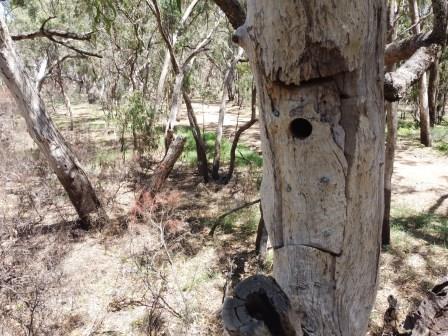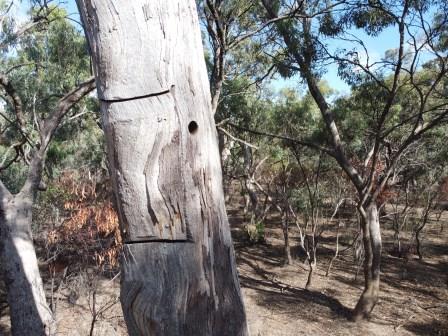
The Treetec arboricultural and ecological team can create wildlife hollows in dead trees or stags using the Faceplate method to create an instant wildlife home.
**It’s important to note though that the Faceplate method is not suited to live trees or where the large faceplate cut may undermine tree structure and is not our method of choice for creating a wildlife hollow. Treetec arborists have developed the now preferred Tec-Door Hollow technique using chainsaws to cut hollows into live trees.**
Using a chainsaw a large ‘faceplate’ is cut from the tree, a cavity is created within the trunk behind that cut, then the faceplate is reattached, usually with an entrance hole bored through it, or through the trunk to meet the internal cavity.
This is a versatile method but not suitable for live trees; the wound being too wide, thus impacting tree health and structure. Faceplates created in live timber will split over time and fail due to shrinkage unless reinforced with a backing plate of plywood or similar.

The Faceplate method is best used on dead trees that have been pruned to reduce the crown above the introduced cavity, this crown reduction or topping reduces the loading on the tree and lessens the likelihood of failure.
Contact us for more information.
